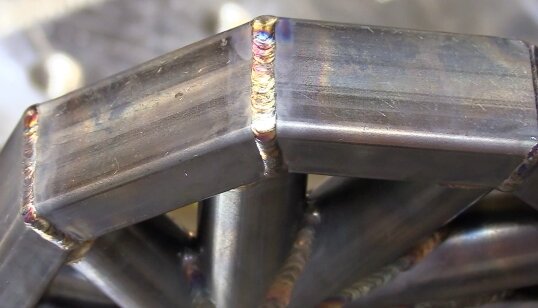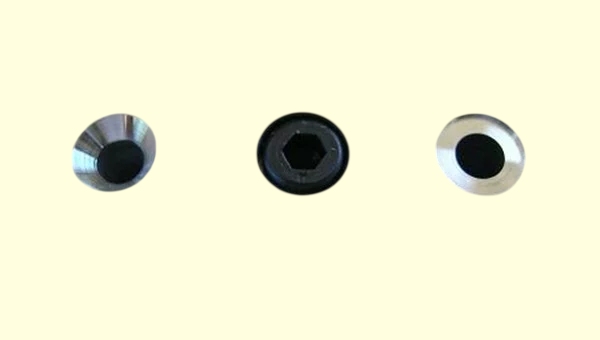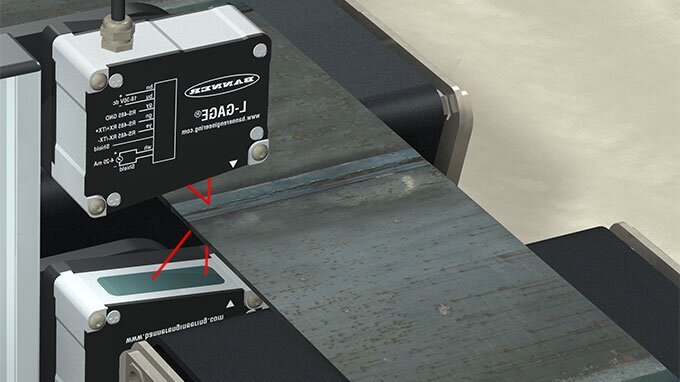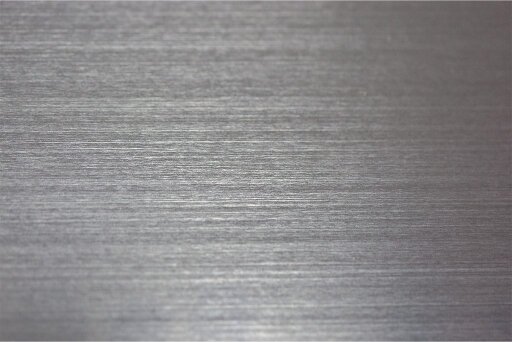Staal is een van de meest veelzijdige materialen die tegenwoordig in de industrie worden gebruikt. Of je nu ontwerpt of produceert, het verschil tussen warmgewalst en koudgewalst staal begrijpen is essentieel. Elk type heeft zijn eigen voordelen en de keuze van het juiste type kan een grote invloed hebben op het resultaat van je project.
Warmgewalst staal wordt gemaakt door metaal boven 1700°F te verhitten en in vorm te walsen. Koudgewalst staal wordt verwerkt bij kamertemperatuur, waardoor het gladder en preciezer wordt. Het belangrijkste verschil? Sterkte, afwerking en kosten.
Om ervoor te zorgen dat je het juiste staal kiest voor jouw toepassing, is het cruciaal om te weten hoe deze verschillen de kosten, sterkte en prestaties beïnvloeden. Laten we beide opties eens nader bekijken.
Wat is warmwalsen?
Warmwalsen is een proces waarbij staal wordt verhit tot een zeer hoge temperatuur, meestal tussen 1700 en 2100 °F, boven het herkristallisatiepunt. Eenmaal verhit, wordt het staal door walsen gevoerd om het te vormen tot platen of balken. De hitte maakt het staal zachter, waardoor het gemakkelijker te vormen is.
Warmgewalste staaleigenschappen
Warmgewalst staal heeft een aantal belangrijke eigenschappen die het geschikt maken voor specifieke toepassingen:
- Ruwe oppervlakteafwerking: Door de hoge temperatuur tijdens het proces heeft het staal vaak een ruw oppervlak. Het kan een extra behandeling nodig hebben, zoals slijpen of coatingvoor een gladdere afwerking.
- Lagere kosten: Warmwalsen is een efficiënte en goedkope methode, waardoor het een kosteneffectieve optie is voor veel projecten.
- Groot, Structurele vormen: Warmgewalst staal kan worden gevormd tot grote en dikke profielen. Dit maakt het ideaal voor structurele onderdelen zoals balken en kolommen.
- Lagere sterkte en toleranties: Hoewel warmgewalst staal flexibel is, heeft het de neiging minder sterk en minder precies te zijn dan koudgewalst staal. Het heeft ook grotere toleranties.
Warmwalsen
Bij warmwalsen wordt het staal eerst verhit in een oven. Zodra het de juiste temperatuur heeft bereikt, wordt het door walsen gevoerd om het samen te drukken en te vormen tot dunne platen of lange staven. Daarna wordt het staal afgekoeld en op de gewenste maat gesneden. Dit proces is snel, kosteneffectief en zeer geschikt voor het vormen van grote en zware profielen.
Temperaturen en mechanische eigenschappen
De temperatuur waarop het staal wordt gewalst, beïnvloedt de uiteindelijke eigenschappen. Hogere temperaturen maken het staal zachter en kneedbaarder. Dit maakt het gemakkelijker om het te vormen, maar kan de treksterkte van het staal verminderen.
Het resultaat is een ruwer oppervlak en grotere toleranties in vergelijking met koudgewalst staal. Het proces is echter kosteneffectiever. Het werkt goed voor toepassingen waarbij geen hoge precisie nodig is.
Wat is koudwalsen (CRS)?
Koudwalsen (CRS) is een proces waarbij staal wordt gevormd bij kamertemperatuur of onder het herkristallisatiepunt. Dit gebeurt nadat het staal al warmgewalst is. Koudwalsen perst het staal samen onder hoge druk, waardoor het dunner en uniformer wordt. Dit proces verbetert ook de mechanische eigenschappen, de oppervlakteafwerking en de tolerantie van het staal.
Koudgewalst staal Kenmerken
Koudgewalst staal heeft verschillende belangrijke voordelen, vooral voor toepassingen die een hogere precisie vereisen:
- Glad oppervlak: Koudgewalst staal heeft een gladder oppervlak dan warmgewalst staal. Hierdoor is het ideaal voor projecten waarbij het uiterlijk belangrijk is, zoals onderdelen voor auto's of apparaten.
- Hogere sterkte: Koudwalsen verhoogt de treksterkte van staal. Dit maakt het sterker en duurzamer, perfect voor producten die meer stress en slijtage ondervinden.
- Strengere toleranties: Koudgewalst staal heeft preciezere afmetingen en een uniforme dikte. Hierdoor is het ideaal voor toepassingen waarbij krappe toleranties vereist zijn.
- Verhoogde hardheid: Het koudwalsproces maakt het staal ook harder. Het wordt beter bestand tegen vervorming, waardoor het geschikt is voor precisiemachineonderdelen.
Koudwalsproces
Bij koudwalsen wordt staal afgekoeld na het warmwalsen en vervolgens door walsen op kamertemperatuur of iets hogere temperaturen gevoerd. Het staal wordt samengeperst om de dikte te verminderen. Dit proces maakt ook de korrelstructuur strakker, waardoor de oppervlakteafwerking en de mechanische eigenschappen verbeteren.
Koudwalsen wordt meestal gebruikt voor dunnere platen en meer gedetailleerde vormen. Daarna wordt het staal vaak warmtebehandeld of gegloeid om de spanning te verlichten en de vervormbaarheid te verbeteren.
Temperaturen en mechanische eigenschappen
Koudwalsen gebeurt bij lagere temperaturen dan warmwalsen, meestal bij kamertemperatuur. Dit temperatuurverschil heeft een grote invloed op de mechanische eigenschappen van het staal. Koudgewalst staal is sterker en harder omdat de korrelstructuur compacter is. Het kan echter brosser zijn, vooral als de dikte aanzienlijk wordt verminderd.
Koudwalsen verbetert de oppervlakteafwerking en precisie. Dit maakt koudwalsen de beste keuze voor toepassingen die deze eigenschappen nodig hebben, zoals onderdelen voor de auto-industrie en de consumentenelektronica.
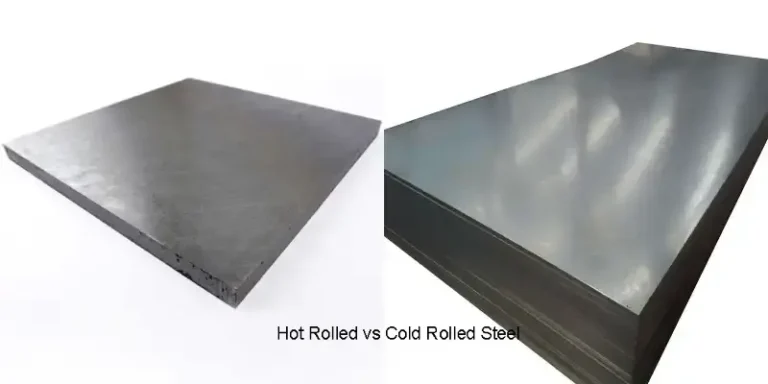
Belangrijkste verschillen tussen warmgewalst en koudgewalst staal
De keuze tussen warmgewalst en koudgewalst staal hangt af van de specifieke behoeften van je project. Laten we de twee soorten staal vergelijken op een paar belangrijke gebieden.
Temperatuur en de invloed ervan op staalconstructies
De temperatuur waarop staal wordt verwerkt, heeft invloed op de structuur.
- Warmgewalst staal: Warmgewalst staal wordt verwerkt bij hoge temperaturen (1.700°F tot 2.100°F) en heeft een lossere korrelstructuur, waardoor het gemakkelijker te vormen is. Deze structuur kan echter resulteren in een lagere treksterkte in vergelijking met koudgewalst staal.
- Koudgewalst staal: Koudgewalst staal, dat op of bij kamertemperatuur wordt verwerkt, heeft een strakkere korrelstructuur, wat de hardheid en sterkte verhoogt. Dit maakt het duurzamer, maar het kan in bepaalde situaties ook brozer zijn.
Procesverschillen: Warm vs Koud
Warm- en koudwalsen zijn heel verschillende processen.
- Warmwalsen: Staal wordt verhit tot hoge temperaturen en door grote rollen gevoerd om het vorm te geven. Dit proces werkt het best voor het produceren van grotere, dikkere staalprofielen zoals balken en platen.
- Koudwalsen: Na het warmwalsen wordt staal op kamertemperatuur verwerkt. Dit resulteert in dunnere, preciezer gevormde profielen. Koudwalsen verbetert ook de afmetingen en de oppervlakteafwerking van het staal.
Effect op mechanische eigenschappen
De mechanische eigenschappen van de twee soorten staal verschillen door de processen die ze doorlopen.
- Warmgewalst staal: Omdat het bij hoge temperaturen wordt gevormd, heeft warmgewalst staal een lagere treksterkte en minder precisie. Het is goed voor toepassingen die geen nauwe toleranties vereisen.
- Koudgewalst staal: Het koudwalsproces verhoogt de sterkte en hardheid van het staal. Het is perfect voor toepassingen die precisie vereisen. Koudgewalst staal maakt ook nauwere toleranties en een betere vervormbaarheid mogelijk.
Oppervlakteafwerking en -uiterlijk
De afwerking van het oppervlak is een van de meest opvallende verschillen tussen de twee.
- Warmgewalst staal: Warmgewalst staal heeft vaak een ruw, geschubd oppervlak door de hoge temperaturen. Het kan een extra bewerking nodig hebben, zoals slijpen of coaten, om het uiterlijk te verbeteren.
- Koudgewalst staal: Koudgewalst staal heeft een glad, verfijnd oppervlak. Dit maakt het visueel aantrekkelijker en ideaal voor toepassingen waar het uiterlijk belangrijk is, zoals consumentenproducten.
Kostenvergelijking
Warmgewalst staal is meestal voordeliger dan koudgewalst staal.
- Warmgewalst staal: Het proces is goedkoper omdat het minder stappen omvat en niet de precisie vereist van koudwalsen.
- Koudgewalst staal: Koudwalsen vereist meer stappen en preciezere machines, waardoor het een duurdere optie is. De hogere sterkte, gladdere afwerking en nauwere toleranties maken het echter de extra kosten waard voor bepaalde toepassingen.
| Functie | Warmgewalst staal | Koudgewalst staal |
|---|---|---|
| Verwerking | Eentraps warmwalsen bij hoge temperaturen | Meerfasig proces: warmwalsen, reinigen, koudwalsen en (optioneel) gloeien |
| Afwerking oppervlak | Ruw, walshuid | Gladde, schone afwerking |
| Maattoleranties | Ruimere toleranties | Strengere toleranties |
| Sterkte | Goede algemene sterkte | Hogere sterkte |
| Vervormbaarheid | Kneedbaarder | Iets minder kneedbaar |
| Kosten | Zuiniger | Duurder |
| Algemene toepassingen | Bouw, autoframes, machineonderdelen | Apparaten, meubels, carrosseriedelen, elektronica |
Warmgewalst vs Koudgewalst staal: Voor- en nadelen
Zowel warmgewalst als koudgewalst staal heeft zijn voor- en nadelen. Je keuze hangt af van de specifieke behoeften en vereisten van je project. Laten we de voor- en nadelen van beide bekijken om je te helpen beslissen.
Warmgewalst staal: Voor- en nadelen
Voordelen:
- Lagere kosten: Warmgewalst staal is betaalbaarder omdat het productieproces eenvoudiger is en uit minder stappen bestaat.
- Snellere productie: Warmwalsen gaat sneller, waardoor het een goede keuze is voor grote productieseries.
- Groot formaat en flexibele vorm: Van warmgewalst staal kunnen grotere en dikkere profielen worden gemaakt, waardoor het ideaal is voor structurele onderdelen zoals balken en grote buizen.
Minpunten:
- Ruwe oppervlakteafwerking: Het oppervlak van warmgewalst staal is vaak ruw en oneffen, waardoor extra bewerkingen zoals slijpen of coaten nodig zijn voor een gladdere afwerking.
- Lagere nauwkeurigheid: Warmgewalst staal is minder precies dan koudgewalst staal. Het is niet ideaal voor projecten waarbij nauwe toleranties vereist zijn.
- Verminderde kracht: Warmgewalst staal heeft over het algemeen een lagere sterkte, dus het is mogelijk niet geschikt voor toepassingen die een hogere sterkte nodig hebben.
Koudgewalst staal: Voor- en nadelen
Voordelen:
- Hogere sterkte en duurzaamheid: Koudwalsen verhoogt de sterkte en hardheid van het staal, waardoor het geschikt is voor toepassingen met hoge prestaties.
- Betere oppervlakteafwerking: Koudgewalst staal heeft een glad, verfijnd oppervlak, waardoor het ideaal is voor producten die een schone afwerking nodig hebben.
- Strengere toleranties: Koudgewalst staal biedt meer precisie en een betere maatnauwkeurigheid, wat belangrijk is voor onderdelen die precies in elkaar moeten passen.
Minpunten:
- Hogere kosten: Koudgewalst staal is duurder omdat het proces complexer en tijdrovender is.
- Breekbaarheid: Koudgewalst staal is sterker maar kan brozer zijn, vooral als het gehard is. Hierdoor kan het in bepaalde situaties sneller scheuren.
- Beperkte opties voor grootte en vorm: Koudgewalst staal is meestal beperkt tot dunnere platen en smallere profielen, waardoor het minder geschikt is voor grotere structurele projecten.
Warmgewalst vs Koudgewalst staal: Toepassingen
Zowel warmgewalst als koudgewalst staal wordt gebruikt in verschillende industrieën, maar door hun unieke eigenschappen zijn ze het meest geschikt voor verschillende toepassingen. Laten we eens kijken waar elk type staal in de praktijk in uitblinkt.
Warmgewalste staaltoepassingen
Bouw en infrastructuur
Warmgewalst staal wordt vaak gebruikt in de bouwindustrie voor bouwmaterialen zoals balken, brandwerende deuren structurele platen. Het grote formaat en de lagere kosten maken het ideaal voor grootschalige bouwprojecten waar precisie niet de hoogste prioriteit heeft.
Auto-industrie
Warmgewalst staal wordt gebruikt bij de productie van autoframes, chassis en andere grote onderdelen die geen hoge precisie vereisen maar wel duurzaamheid. De mogelijkheid om snel en kosteneffectief grote onderdelen te produceren is hier een belangrijke factor.
Productie van buizen en pijpen
Warmgewalst staal wordt vaak gebruikt voor de productie van buizen. Omdat het in grote secties kan worden gewalst, is het een kosteneffectieve optie voor de productie van lange, duurzame buizen die worden gebruikt in water-, olie- en gasleidingen.
Landbouwmachines
Bij de productie van landbouwmachines wordt warmgewalst staal vaak gebruikt voor de productie van grote, zware onderdelen die niet aan strenge tolerantie-eisen hoeven te voldoen. Het is ideaal voor onderdelen zoals frames en structuren.
Koudgewalste staaltoepassingen
Auto-onderdelen en componenten
Koudgewalst staal wordt vaak gebruikt in de auto-industrie voor onderdelen die een hoge sterkte, precisie en een glad oppervlak vereisen. Onderdelen zoals carrosseriepanelen, brandstoftanks en interieuronderdelen profiteren van de verbeterde sterkte en afwerking van koudgewalst staal.
Consumentenelektronica
Koudgewalst staal wordt gebruikt bij de productie van consumentenelektronica, zoals behuizingen van apparaten, laptops en frames voor mobiele telefoons, waarbij een glad oppervlak en precieze afmetingen cruciaal zijn voor zowel de functionaliteit als de esthetiek.
Precisiemachines en -uitrusting
De hoge sterkte en nauwe toleranties van koudgewalst staal maken het perfect voor precisiemachines. Het wordt gebruikt bij de productie van onderdelen zoals tandwielen, assen en andere machineonderdelen die duurzaamheid en exacte afmetingen vereisen.
Huishoudelijke Apparaten
Veel huishoudelijke apparaten, zoals koelkasten, wasmachines en ovens, maken gebruik van koudgewalst staal voor hun structurele onderdelen. Het gladde oppervlak en de precisie zijn essentieel voor de kwaliteit en het uiterlijk van het product.
Medische apparaten
Koudgewalst staal wordt vaak gebruikt in de industrie voor medische apparatuur voor onderdelen die moeten voldoen aan hoge zuiverheidsnormen en precisie, zoals chirurgisch gereedschap, frames voor medische apparatuur en instrumenten.
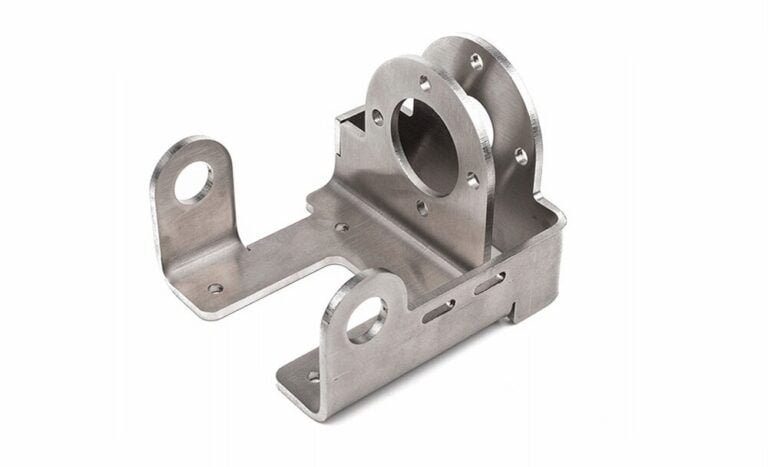
Hoe kiezen tussen warmgewalst en koudgewalst staal?
De keuze tussen warmgewalst en koudgewalst staal hangt af van de specifieke behoeften van je project. Laten we eens kijken naar de belangrijkste factoren die je helpen de juiste beslissing te nemen.
Factoren om te overwegen: Kosten, sterkte en toepassing
- Kosten:
Warmgewalst staal is meestal betaalbaarder omdat het productieproces eenvoudiger is. Het is een goede optie voor grootschalige of budgetgevoelige projecten. Koudgewalst staal is duurder omdat het productieproces complexer is, maar het biedt een betere precisie en een gladdere afwerking. - Sterkte:
Koudgewalst staal is sterker dan warmgewalst staal omdat het bij kamertemperatuur wordt verwerkt. Hierdoor ontstaat een dichtere korrelstructuur. Als je project een hogere sterkte en duurzaamheid vereist, is koudgewalst staal misschien de betere keuze. Warmgewalst staal kan echter nog steeds goed werken voor toepassingen die geen hoge sterkte vereisen. - Toepassing:
Warmgewalst staal is ideaal voor grote structurele onderdelen zoals balken, pijpleidingen en landbouwmachines, waarbij precisie minder belangrijk is. Koudgewalst staal is het beste voor onderdelen die precisie vereisen, zoals auto-onderdelen, consumentenelektronica en machines die strakke toleranties en een glad oppervlak nodig hebben.
Wanneer warmgewalst staal gebruiken?
- Grootschalige projecten:
Warmgewalst staal is perfect voor projecten met grote onderdelen of structuren. Het is ideaal wanneer kosten en snelheid belangrijker zijn dan oppervlakteafwerking of precieze afmetingen. - Structurele onderdelen:
Warmgewalst staal wordt vaak gebruikt in de bouw, bruggen en infrastructuur waar sterkte en duurzaamheid belangrijk zijn, maar exacte precisie niet zo kritisch is. - Bulkproductie:
Als je een groot aantal onderdelen wilt produceren tegen lagere kosten, is warmgewalst staal een goede keuze vanwege de snellere productie en lagere materiaalkosten.
Wanneer koudgewalst staal gebruiken?
- Precisieonderdelen:
Koudgewalst staal is het materiaal bij uitstek voor onderdelen die nauwe toleranties vereisen. Het is perfect voor hoogwaardige onderdelen zoals tandwielen, machineonderdelen en auto- of luchtvaartonderdelen die nauwkeurigheid en sterkte vereisen. - Esthetische overwegingen:
Als de oppervlakteafwerking belangrijk is, zoals voor consumentenelektronica, apparaten of decoratieve producten, is koudgewalst staal de betere keuze vanwege het gladde en verfijnde oppervlak. - Sterkte- en duurzaamheidseisen:
Als je staal met een hogere sterkte nodig hebt, is koudgewalst staal de betere optie. Het is duurzamer en harder, waardoor het ideaal is voor veeleisende toepassingen zoals auto-onderdelen.
Conclusie
Warmgewalst staal wordt verwerkt bij hoge temperaturen, waardoor het kosteneffectiever is en geschikt voor grote structurele onderdelen. Koudgewalst staal daarentegen wordt verwerkt bij kamertemperatuur en biedt een gladdere afwerking, hogere sterkte en nauwere toleranties, maar tegen hogere kosten.
Heb je meer informatie of hulp nodig bij het selecteren van het juiste staal voor jouw project? Neem contact met ons op vandaag nog voor deskundig advies en oplossingen op maat voor jouw behoeften!
FAQs
Wat is gemakkelijker te buigen, warm of koud gewalst staal?
Warmgewalst staal is gemakkelijker te buigen dan koudgewalst staal. Dit komt omdat het tijdens de productie wordt verhit tot hoge temperaturen, waardoor het zachter en flexibeler wordt. Koudgewalst staal, dat op kamertemperatuur wordt verwerkt, is harder en stijver.
Kan warmgewalst staal voor dezelfde toepassingen worden gebruikt als koudgewalst staal?
Warmgewalst staal wordt over het algemeen niet voor dezelfde toepassingen gebruikt als koudgewalst staal. Het werkt het best voor grootschalige projecten zoals de bouw of zware machines, waar precieze afmetingen niet zo kritisch zijn. Koudgewalst staal, met zijn gladdere oppervlak en sterkere eigenschappen, heeft de voorkeur voor taken die precisie vereisen.
Is koudgewalst staal sterker dan warmgewalst staal?
Ja, koudgewalst staal is sterker dan warmgewalst staal. Het koudwalsproces verfijnt het staal bij kamertemperatuur, waardoor de korrelstructuur dichter wordt. Dit verhoogt de sterkte en hardheid, waardoor het geschikter is voor sterke, duurzame en nauwkeurige toepassingen.
Waarom is koudgewalst staal duurder dan warmgewalst staal?
Koudgewalst staal is duurder dan warmgewalst staal omdat het extra bewerking vereist. Na het warmwalsen ondergaat koudgewalst staal nog een extra bewerking bij kamertemperatuur. Dit kost meer tijd, energie en precisieapparatuur.
Kan koudgewalst staal verder worden verwerkt?
Ja, koudgewalst staal kan verder worden bewerkt. Het kan behandelingen ondergaan zoals gloeien (om spanning te verminderen), galvaniseren (om roest te voorkomen) of coaten met verf of andere materialen.
Hey, ik ben Kevin Lee

De afgelopen 10 jaar heb ik me verdiept in verschillende vormen van plaatbewerking en ik deel hier de coole inzichten die ik heb opgedaan in verschillende werkplaatsen.
Neem contact op

Kevin Lee
Ik heb meer dan tien jaar professionele ervaring in plaatbewerking, gespecialiseerd in lasersnijden, buigen, lassen en oppervlaktebehandelingstechnieken. Als technisch directeur bij Shengen zet ik me in om complexe productie-uitdagingen op te lossen en innovatie en kwaliteit in elk project te stimuleren.

